
Learning PersonaLization: the necessary evoLution of emPLoyee training in a remote WorLd - Jim Frawley, CEO and Founder, Bellwether FEBRUARY 2023 • Vol.10 • No.02 (ISSN 2564-2014) 21 14 30 33 Personalized Learning in the Workplace - Brett Farmiloe, Terkel.io Learning Personalization and fostering change readiness in your organization - Dr. Jonathan H. Westover, UVU how coaching Will shape the modern enterprise - Jonathan Passmore, Ph.D., CoachHub 4 Ways hr can integrate L&d into their talent management strategy - Laura Baldwin, O’Reilly Media
(ISSN 2564-2014)
Learning Personalization:
the necessary evolution of employee training in a remote World

How to modernize internal development efforts to effectively meet the needs of your organization
11 Why Do We Virtualize Classrooms?
The most effective learning will contain both - virtual and classroom
- Glen D. Vondrick, CEO, CoSo Cloud LLC
18 Looking For Soft Skills In All The Right Places
The value of soft skills is their fluidity
- Adam Wray, Founder and CEO, AstrumU
25 Top Employee Learning & Development Trends for 2023

7 trends that await HR this year - Part II
- Josh Bersin, CEO, The Josh Bersin Company
37 How To Manage Organizational Knowledge Without Killing It
If organizational knowledge is not shared and managed, companies may become obsolete, taken over, or acquired
- Mostafa Sayyadi Ghasabeh, Management Consultant and Executive Coach, and Michael J. Provitera, President, Motivational Leadership Training
Employee Learning & Development Excellence FEBRUARY 2023 Vol.10 No.02
07
inde X
- Jim Frawley, CEO and Founder, Bellwether
On the Cover
Content
Personalized Learning In The Workplace

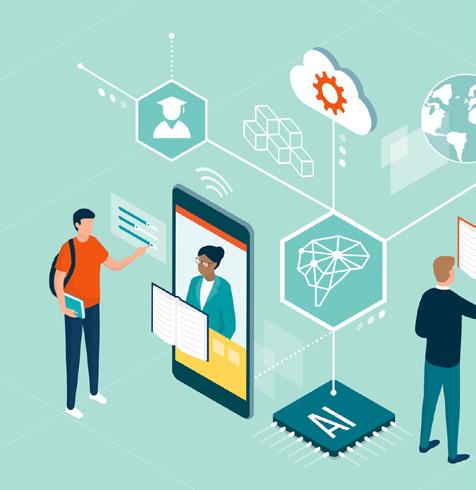
8 leaders share their best practices: Part I

- Brett Farmiloe, Founder and CEO – CHROTerkel.io.
Learning
Personalization And Fostering Change Readiness In Your Organization
We need to foster our individual and collective change agility
- Dr. Jonathan H. Westover, Associate Professor, Organizational Leadership, Woodbury School of Business, UVU
How Coaching Will Shape The Modern
Enterprise Business trends in coaching 2023

- Jonathan Passmore, Senior Vice President, Coaching, CoachHub
Top Picks 14 21 30 33
4 Ways HR Can Integrate L&D Into Their Talent Management Strategy
If you’re looking for top talent, L&D should be at the heart of your talent management strategy
- Laura Baldwin, President, O’Reilly Media
INDEX
Editorial Purpose
Our mission is to promote personal and professional development based on constructive values, sound ethics, and timeless principles.
Excellence Publications
Debbie McGrath CEO, HR.com - Publisher
Dawn Jeffers VP, Sales

Sue Kelley Director (Product, Marketing, and Research)
Babitha Balakrishnan and Deepa Damodaran Excellence Publications Managers and Editors
Employee Learning & Development Excellence Team
Deepa Damodaran Editor
Chinnavel Design and Layout (Digital Magazine)
Chandra Shekar Magazine (Online Version)
Submissions & Correspondence
Please send any correspondence, articles, letters to the editor, and requests to reprint, republish, or excerpt articles to ePubEditors@hr.com
For customer service, or information on products and services, call 1-877-472-6648
For
Employee Learning & Development Excellence (ISSN 2564-2014)
debbie mcgrath Publisher, HR.com
deepa damodaran Editor, Employee Learning & Development Excellence

is Personalized Learning the future of employee Learning and development
Apandemic,mass resignation, and people’s changing priorities have transformed the world of work forever. We are continuously shifting towards a permanent hybrid or remote working environment. Employees are more scattered than ever before.
With this ‘new normal’ come several essential workplace adjustments or changes that must also be madeincluding how we train and develop remote employees.
When each of your employee’s schedules, work natures, and skill requirements do not match, how do we assume that a one-sizefits-all learning and development (L&D) framework will work for all of them?
Traditional training methods are outdated and ineffective. They lack purpose, structure, and specificity, and due to poor design, do not actually provide much benefit or value to employees.
How can then HR design a learning strategy for the current workforce? What are the requisites of modernizing employee training for a remote environment? Why is learning personalization key to our L&D strategy?
Learn how organizations can modernize internal development efforts to effectively meet the needs of their organization in Learning Personalization: The Necessary Evolution Of Employee Training In A Remote World by Bellwether CEO Jim Frawley.
This article, featured on the cover, explains why it is time to let go of more traditional systems that have been demonstrating why they are no longer effective or beneficial.
From creating an individual development plan to seeing how your team’s data connects to feedback, check out the nine ways leaders are promoting personalized learning in their workplace, in Terkel.io CEO Brett Farmiloe’s Personalized Learning In The Workplace
In Looking For Soft Skills In All The Right Places, AstrumU’s Adam Wray delves into why employers are quickly becoming more aware of the value of soft skills over hard skills and how (and what kinds of) education can bridge the gap.
Also, read Dr. Jonathan H. Westover’s Learning Personalization And Fostering Change Readiness In Your Organization to understand why we need to foster our individual and collective change agility, and 4 Ways HR Can Integrate L&D Into Their Talent Management Strategy, where O’Reilly Media’s Laura Baldwin tells us why L&D should be at the heart of a company’s talent management strategy.
That is not all! We bring you a handful of other insightful articles in this edition of Employee Learning & Development Excellence, and hope you find answers to your queries about employee learning and development that help you achieve excellence in our L&D initiatives.
Happy Reading!
by HR.com Limited, 56 Malone Road, Jacksons Point, Ontario L0E 1L0 Internet Address: www.hr.com
is
The views, information, or opinions expressed in the Excellence ePublications are solely those of the authors and do not necessarily represent those of HR.com and its employees. Under no circumstances shall HR.com or its partners or affiliates be responsible or liable for any indirect or incidental damages arising out of these opinions and content. editor’s note
Disclaimer:
OR
© 2023 HR.com. No part of this publication may be reproduced or transmitted in any form without written permission from the publisher. Quotations must be credited.
Advertising Opportunities, email: sales@hr.com Copyright
published monthly
Subscribe now for $99 / year And get this magazine delivered to your inbox every month Become a Member Today to get it FREE! SIGN UP Write to the Editor at ePubEditors@hr.com
how are our employee Learning & development
How are our Training & Development Products and Services helping to make you smarter?
Training & Development Excellence - Monthly Interactive Learning Journal
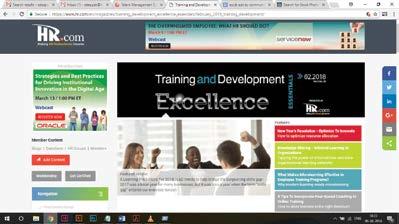
employee Learning & development excellence - monthly interactive Learning Journal
This monthly interactive learning experience showcases effective, learner-centered technologies and content to facilitate the formal and informal transfer of the latest e-learning knowledge, information and skills in today’s workplace.
Training and Development Virtual Events
employee Learning & development - virtual events

Virtual events in the Employee Learning and Development track help you stay on top of the latest training, development and assessment techniques in order to maintain a competitive edge in the marketplace. Develop your skills, concepts, and attitude changes, and gain more knowledge to enhance performance. Training is crucial for organizational development and its success which is fruitful to both employers and employees of any organization. Some important benefits of training and development include: Increased productivity, Less supervision, Job satisfaction and Skills development. Each Virtual Event consists of up to 10 credit webcasts.
Virtual events in the Training and Development track help you stay on top of the latest training, development and assessment techniques in order to maintain a competitive edge in the marketplace. Develop your skills, concepts, and attitude changes, and gain more knowledge to enhance performance. Training is crucial for organizational development and its success which is fruitful to both employers and employees of any organization. Some important benefits of training and development include: Increased productivity, Less supervision, Job satisfaction and Skills development. Each Virtual Event consists of up to 10 credit webcasts.
Training and Development Webcasts for Credit
employee Learning & development - Webcasts for credit
HR.com webcasts deliver the latest Training and Development industry news, research trends, best practices and case studies directly to your desktop. Webcasts are available live online with a downloadable podcast and a copy of the slides (PDF) available before and after each webcast. Earn all of the required recertification credits for aPHR, PHR, SPHR, GPHR, and SHRM Certifications. HR.com’s one-hour webcasts, in every HR specialty including HRIS and Payroll, are pre-approved for HRCI and SHRM credit (excluding Demo webcasts).
Training and Development Community
employee Learning & development - community
Join almost 13,000 HR.com members with a similar interest and focus on Training and Development. Share content and download research reports, blogs, and articles, network, view educational webcasts, and “follow” peers and have them “follow” you in a social network platform to communicate regularly and stay on top of the latest updates. This well established Training and Development Community is an invaluable resource for any HR professional or manager.
Use these invaluable Training & Development resources today!
Employee Learning & Development
SEP 2017 Vol. 5 No. 09
For more information phone: 1.877.472.6648 | email: sales@hr.com | www.hr.com
In a world of unparalleled challenges (global pandemic, racial injustice, political rivalry, digital 4.0, emotional malaise), uncertainty reigns. Finding opportunity in this context requires harnessing uncertainty and harnessing starts with reliable, valid, timely, and useful information. The Excellence publications are a superb source of such information. The authors provide insights with impact that will guide thought and action.
dave ulrich
Rensis Likert Professor, Ross School of Business, University of Michigan Partner, The RBL Group

Excellence publications are my ‘go-to’ resource for contemporary and actionable information to improve leadership, engagement, results, and retention. Each edition offers rich and diverse perspectives for improving the employee experience and the workplace in general.

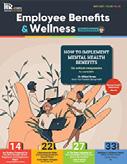



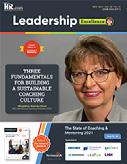
 Julie Winkle giulioni Author, Virtual /Live Keynote Presenter, Inc.’s Top 100 Leadership Speakers
Julie Winkle giulioni Author, Virtual /Live Keynote Presenter, Inc.’s Top 100 Leadership Speakers

I regularly read and contribute to Leadership Excellence and Talent Management Excellence. I use many of the articles I read to augment my own presentations and I often share the articles with my clients. They are always quick, right on target for the latest issues in my field, and appreciated by my clients. If you want to stay up to date on the latest HR trends, choose a few of the different issues from the Excellence series of publications.



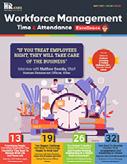

 dr. Beverly Kaye CEO, BevKaye&Co.
dr. Beverly Kaye CEO, BevKaye&Co.

WHY EXCELLENCE PUBLICATIONS?
We’re eager to hear your feedback on our magazines. Let us know your thoughts at ePubEditors@hr.com
Learning Personalization: t he necessary evolution of employee training in a remote World
how to modernize internal development efforts to effectively meet the needs of your organization
By Jim Frawley, Bellwether
We are continuously shifting towards a permanent hybrid or remote working environment. There was speculation throughout the pandemic whether those trends would hold or revert back to a collective in-person climate, but it seems fairly safe to say the remote culture is here to stay.
With this ‘new normal’ come several tangential workplace adjustments or changes that must also be made – including how we train and develop remote employees.
To put it bluntly, traditional training methods are outdated and ineffective. They lack purpose, structure, and specificity, and due to poor design, do not actually provide much benefit or value to the employee. These programs are seen as obligatory steps to settle into a new position, acquire a mandatory certification, or even check a box in hopes of a promotion or a raise.
Many organizations are still fighting to employ these traditional methods, forcing them into a modern remote or hybrid mold, regardless of how ‘square peg round hole’ the fit may be. So much of workplace cul-
ture has begun moving in the direction of what favors the employee, and these programs must follow. The first and possibly most important step in modernizing employee training, especially as it pertains to a remote environment, is to identify the purpose of the program – whether it be training, development, or a thought initiative. It is a step most organizations completely neglect, but the identity of the program ultimately drives structure and purpose, both of which are essential for any successful method.
training
When we think of ‘training,’ we most likely envision some sort of assembly line, and the reality is, assembly lines are ineffective in remote settings. Most training programs are designed with a one-size-fits-all mentality. There is zero consideration for an employee’s learning style, current skill set, or career goals, resulting in a lack of efficiency from the get-go.
As company leadership slowly evolves standard operating procedures into remote-friendly formats, employees are often stuck with virtual training manuals to read independently, Powerpoint presentations to scroll through, or self-led educational modules to
Employee Learning & Development Excellence presented by HR.com February 2023 7 Submit Your Articles
cover articLe
navigate. More often than not, they are left with no real-time support or guidance, and instead of prioritizing the content or subject matter at hand, it becomes a mindless race to the finish line.
development
When we think of ‘development,’ a more intuitive model comes to mind, one that provides greater potential for the employee, simply in that this approach tends to offer more personalization. Whether the program targets a more specific skill set or position, the model is likely more interactive, or customizable based on the needs of the employee.
A development program is a strong and effective approach for remote employees – but we cannot just dust off an old script. There must be accountability on the part of the participant, by means of personalization or customization. Professional development should never be a ‘sit back and learn’ model – in person or remotely – but rather include an experiential component in which the employee fills in the gaps to make it apply directly to them.
thought initiatives
Finally – ‘thought initiatives.’ At its core, a thought initiative is all about internal improvements. These can be anything from administrative processes to
company activities, and may be presented to groups of employees who have expressed a vested interest in a particular area of operations, a committee, or simply joining a targeted conversation to increase their involvement within the company.
A few examples of thought initiatives: How are we communicating progress and value? How can a virtual environment best be set up for collaboration? How can we get people to see the larger picture? How can we be strategic with the company budget in order to boost morale?

The goal here is open and impactful communication, and more often than not, is extremely productive in a remote setting. Due to the innate obstacles of a virtual meeting, it is most productive to keep these conversation groups on the smaller side so no one feels the temptation to press ‘mute’ and tune out, or feel the social discomfort of not knowing when it may be appropriate to speak up.
For any of these models to work, there is one glaring requirement – the employee must see value in it for them. Otherwise, it will likely fall on deaf ears. Nobody has the patience, energy, bandwidth, or time for pointless developmental and training programs. They will log in, turn the camera off, and completely check out.
Employee Learning & Development Excellence presented by HR.com February 2023 8 Submit Your Articles
Learning Personalization: The Necessary Evolution Of Employee Training In A Remote World
Before putting pen to paper, or even determining the appropriate model or program, we must first identify the frustration or pain points of the employee. If the employees can see the benefit and value, we instantly earn their buy-in and active participation. These programs cannot be introduced in a way that frames them as an obligation, solely in the best interest of the organization, or even “you must complete X and Y.” Ultimatums and blanket advice are typically interpreted as an attempt at superiority.
Survey the employees and find out where they see opportunities for improvement or growth, what challenges they are facing that disrupt productivity, or areas in which they are driven to learn and grow. Often the pain points the employee is feeling directly impact the health or bottom line of the business. Thus, initiatives that benefit the best interest of the employee do so for the business as well.
As we all continue to actively define and practice the “future of work,” we must do a better job of serving the employee. Archaic approaches to training and development may not have ever reached their full potential, so now faced with a changing and more tech-reliant work environment, training, development, and all associated internal initiatives must be designed with
an interactive, personalized structure in mind. One that captivates the attention of the employee, while presenting new and pertinent information, or solving an existing or relevant problem.
What benefits the employee, benefits the organization. It is time to lean into the remote workforce and accept that it is here to stay, while letting go of more traditional systems that have been demonstrating they are no longer effective or beneficial.


enhance their growth.
Would you like to comment?
Employee Learning & Development Excellence presented by HR.com February 2023 9 Submit Your Articles
Jim Frawley is a Coach, Consultant, and the CEO and Founder of Bellwether He specializes in helping corporations maximize their efficiency and
Learning Personalization: The Necessary Evolution Of Employee Training In A Remote World
The Future of Coaching and Mentoring
April 5-6, 2023
Join us to learn how to maximize the potential of your people with the capabilities and skills they need to be happy and engaged employees.
This complimentary 2-day virtual event will include expert sessions covering a range of issues to help HR adapt their workforce coaching and mentoring initiatives to today’s changing environment.

Examples of session topics include:
� strategies and solutions to help HR improve employee coaching and mentoring
� what’s working and not working with employee coaching/mentoring
� the expertise of today’s leaders in these areas
� the hindrances to success
� the relationship of coaching and mentoring to organizational performance
� how to best leverage coaching and mentoring programs for the future of business
In addition, this event will also explore the role of emerging technologies and how they will change the face of coaching and mentoring and new work processes over the next decade.
sales@hr.com | 877-472-6648 www.HR.com
FREE Virtual Event
Register for Free
Why do We virtualize classrooms?
the most effective learning will contain both - virtual and classroom
By Glen D. Vondrick, CoSo Cloud LLC
In2020, every organization that teaches, trains, or educates was forced to move all their classroom activities to the virtual space — or shut down. For businesses and schools, shutting down was not an option, and a great experiment in virtual learning accelerated.
Today, many instances of virtual learning have persisted beyond the time when they could have returned to
their former in-person iterations. Organizations have found unique benefits in virtual learning: cost savings, widely available high-quality instruction, technical features that enable interaction and in-depth discussion, and better metrics for assessing participation and results.
These are all boons to education and corporate training, but where virtual learning has not been effective there is a common complaint: It is impossible to replicate the classroom environment.

Employee Learning & Development Excellence presented by HR.com February 2023 11 Submit Your Articles
Although the public first saw motion pictures as early as the 1890s, it was not until 1903s The Great Train Robbery that the medium started to hit its stride. The film’s tagline delivered, largely, because The Great Train Robbery was the first film to use now-standard practices like shooting on location, camera pans, and close-ups. Previously, movies used the standards for what actors and directors knew: the theater.

Older movies were essentially stage plays captured on film, without the benefits that the medium of film offered to enhance the drama. In the world of virtual learning, we are in about 1902 — the technology to transform virtual learning exists, but organizations
have largely yet to deploy it creatively. We are still virtualizing classrooms rather than building engaging virtual learning environments that offer richness and effectiveness beyond the classroom.

so, are traditional classrooms dead?
No. There are valid reasons why the classroom has been the standard for training and education for millennia: First, it was the only option available. Second: there are real benefits to students and teachers being together in person. We evolved “in person,” and there are subtle cues of body language, speech, and awareness that good educators can use to make classroom learning effective. Chance encounters between students, the opportunity to ask whispered clarifications to your neighbor, and discuss the session in the corridor afterward. This stuff still works.
These are among the few elements that produce the complaint that virtual classrooms can not replicate the true classroom environment, and the reason stage plays were not usurped by movies. We now have them both, and they provide different levels of engagement, context, and information.
how to stop filming stage Plays
It is easy to look back and see how moviemakers unlearned what they had learned and created a whole new art form. How can we begin projecting this lesson forward in the world of virtual training?
Employee Learning & Development Excellence presented by HR.com February 2023 12 Submit Your Articles
“replete with thrilling and exciting incidents!”
Why Do We Virtualize Classrooms?
1. Use every feature we have already eLearning platforms today enable break-out sessions controlled by the instructor, advanced gamification functionality, and in-training assessment and analysis. These features allow for a qualitatively different kind of engagement than the classroom setting, and anything that increases engagement is good.
2. Combine these features with access to the best instructors. One of the key advantages of virtual learning is the ability to connect the best instructors and best-designed courses with thousands of participants. Technical gadgets can only go so far — if the course material and instructor are poor, outcomes will be as well. Take advantage of the ability to expose your best instructors to a wide audience.
3. Take technical gadgets seriously. There is a lot of technology on the near horizon that will enable the virtual learning equivalent of Justus D. Barnes firing directly into the camera.

Virtual learning offers the possibility of taking participants into virtual spaces selected for their unique ability to contribute to learning effectiveness. Virtual reality and the Metaverse are two key technologies here, creating additional dimensions of engagement atop tailor-made learning environments.
For example, it is known that being in natural environments sets the brain up for calm, focus, and creativity.
While an in-person lecture to thousands in the forest or mountains is impractical, it is replicable through VR and the Metaverse. Virtual retreats and off-sites can be set in beautiful virtual retreat centers built just for the occasion.
The “memory palace” is a perfect example of how creating engaging virtual environments can enhance learning. An ancient concept, the memory palace suggests visualizations of movement through spaces can enhance memory formation and retention. For example, knowledge of revenue accounting may be stored on the virtual green of hole five of your favorite golf course. VR and the metaverse offer the technology to make this difficult but effective memory technique accessible to everyone by presenting information in a dynamic, spatial context.
engagement is Key
The Great Train Robbery was a hit because it maximized engagement within its medium. Even more than a century later, films have not usurped stage plays, just as virtual learning will never usurp the classroom. The most effective education will contain both. By thinking creatively about the best ways to achieve engagement within the virtual learning medium, we have the opportunity to create something with novel kinds of effectiveness, rather than merely virtualize what is effective in person.
Glen D. Vondrick is the CEO of CoSo Cloud LLC. Glen joined ConnectSolutions Inc. as CRO in 2015, and then as CEO, he led the company through a successful acquisition by AASKI Technology Inc. in April 2017. Glen’s executive leadership experience includes 20+ years in the enterprise messaging and communications security space, including serving three other times as CEO of private venture-backed high technology companies.
Would you like to comment?

Employee Learning & Development Excellence presented by HR.com February 2023 13 Submit Your Articles
Why Do We Virtualize Classrooms?
Personalized Learning in t he Workplace
8 leaders share their best practices: Part i
By Brett Farmiloe, Terkel.io
Fromcreating an individual development plan to seeing how your team’s data connects to feedback, here are 8 answers to the question, “What are your best practices for building and/or promoting personalized learning in the workplace?”

1. Offer an Individual Development Plan
2. Encourage Teams to Lean on One Another and Peer Mentor
3. Share Your Personal Journey
4. Invest in Learning as a Benefit for the Entire Company
5. Support Employees Taking Ownership of Education
6. Don’t Conflate Adult Learning With Child Learning
7. Create a Culture of Learning
8. Personalize Learning With EdTech
Employee Learning & Development Excellence presented by HR.com February 2023 14 Submit Your Articles
top Pick
1. offer an individual development Plan
Every company has some areas that it wants its employees to be good at. However, it is equally important to give employees an opportunity for individual development and offer options for personalized learning. That is why we offer an individual development plan that each team member can use for individual growth. It does not have to be anything connected to their role, but something that can bring a new twist to their careers.
For example, we had data scientists that took part in design courses or content writers interested in Excel training. After discussing a new idea with a manager, teams can support each other. This approach also gives a chance to other employees to get mentoring experience. The opportunities are endless. The key lies in good planning and effective communication between teams that support each other in gaining new skills.
Dorota Lysienia, Community Manager, LiveCareer

2. encourage teams to Lean on one another and Peer mentor
Encourage peer learning and development so teams can share skills and help each other reach mutual understanding. Employees who help one another are more likely to ask questions, ask for help, or learn workarounds that might not be part of an official workflow.
Every employee learns differently, and one onboarding procedure is not likely to fit one hundred percent of the time. While onboarding will always be the critical structure and foundation employees use to learn the ropes of an organization, peer development opportunities often go further while building team rapport and satisfaction.
Encourage teams to support one another and to get to know each other more personally. Interactive, integrated work cultures drive better performance and help each employee along their individual path to find the tips, methods, and procedures that best help them accomplish their work.
Guna Kakulapati, Co-Founder & CEO, CureSkin

3. share your Personal Journey
Admissions departments will sift through all the different classes and standardized testing along with their corresponding numbers of thousands of students, but to make your application stand out, it is important to tell your story. What makes a student unique is not how they did in the classes or on the SAT that everyone has to take, but the journey they have made to arrive where they are now.
Talking about the challenges they faced, sharing their successes and missteps, and explaining how that led to their current goals, will show the admissions department how they developed. In telling their personal story, they can share with the decision makers who they are as a person rather than just what they have accomplished as a student, and in doing so, make their application stand out.
Cody Candee, CEO, Bounce

Employee Learning & Development Excellence presented by HR.com February 2023 15 Submit Your Articles Personalized Learning In The Workplace
4. Invest in Learning as a Benefit for the entire company
Personalized learning can future-proof your organization, so promoting it is in your best interest. When your employees have a pathway to grow and upskill, it creates a sense of job security for them and opportunities for advancement.
Additionally, it prevents you from needing to outsource talent, which is an expensive endeavor. By investing in your employees by offering ample opportunities for learning in the workplace, you will create a culture where people are motivated to continue to grow within your company. This is highly beneficial for morale, employee retention, and creating a great company environment.
Ann McFerran, CEO, Glamnetic

5. support employees taking ownership of education
When you use all tools and platforms at your disposal to deliver a tailored experience to your employees based on their interests and needs, you will encourage your employees to take ownership of their own learning.
Providing resources and support for your employees means they can better identify their learning goals and be more engaged in pursuing them. This also means offering a variety of learning opportunities, both formal and informal, so your employees can choose what is best for them.
The easier you make it for your employees to take advantage of their development, the more inspired they will be. When you encourage employees to take ownership of their learning, you will create a positive culture around learning and development, and it will inspire your team to take ownership of their own improvement.
Anthony Martin, Founder & CEO, Choice Mutual


6. Don’t Conflate Adult Learning with Child Learning
A best practice or mindset that has been invaluable for us is remembering that adult learning principles are entirely different from child pedagogy. Most of us are only familiar with institutionalized learning as a school system and trying to replicate that learning model for adults is ineffective.
We predicate adult learning on autonomy. Adult learners are more likely to enjoy and absorb training materials and concepts if they feel they have had a say in it and do not feel they are being closely supervised. Our best practice is front-loading the time spent with employees to determine how THEY want to learn, and then being more handsoff during the actual learning process. Our job is to provide resources, including time, for the learning to progress as the individual needs, not to dictate HOW they need to learn!
Gates Little, President & CEO, altLINE Sobanco
Employee Learning & Development Excellence presented by HR.com February 2023 16 Submit Your Articles Employee Training And Professional Development 2023
7. create a culture of Learning
One best practice I follow when building and/or promoting personalized learning in the workplace is to create a culture of learning. This means creating an environment, where employees feel comfortable asking questions, sharing their knowledge, and pushing themselves to develop new skills.
To do this, I make sure there are resources available to employees that allow them to access training and development information, as well as provide opportunities for employees to attend courses and workshops that apply to their job.
I also emphasize the importance of feedback, both from me as a leader and from peers, to provide a space for employees to reflect on their learning and identify areas for improvement. Finally, I recognize and reward employees for their effort and progress, which encourages further development and helps to build a culture of learning.
Luke Lee, CEO, Ever Wallpaper

8. Personalize Learning with edtech
As a leader in the tech recruiting sector, it is up to me to ensure my workforce stays on top of the latest trends. Luckily, for continuing education, there are more options than ever.

EdTech is not just for the classroom; it is being used in offices and headquarters around the world. Utilizing things like adaptive learning algorithms, digital whiteboards, and audible lessons allows workers to get up-to-date at their own pace.
Previously, when a new development rocked my industry, one team member would inevitably already be up to speed, while another would have trouble grasping the concept. EdTech is flexible; it has allowed me to tailor lessons, largely eliminating this problem.
Rob Reeves, CEO & President,
 Technology
Technology
Brett Farmiloe is the Founder and CEO – and currently CHRO - of Terkel. io. Brett is an SHRM Influencer and has also been a keynote speaker at several state SHRM conferences around the topic of employee engagement.”
Would you like to comment?

Employee Learning & Development Excellence presented by HR.com February 2023 17 Submit Your Articles
Personalized Learning In The Workplace
Redfish
Looking for soft skills in all t he right Places
The value of soft skills is their fluidity
By Adam Wray, AstrumU
Imaginean applicant with twenty years of meticulous experience, two higher-education degrees and the complete inability to communicate their ideas clearly nor nimbly adapt to changing deadlines. Employers are quickly becoming more aware of the value of soft skills over hard skills and how (and what kinds of) education can bridge the gap.
Quantifying the value of soft skills
Ultimately, soft skills are the basis of an individual’s career. Without time management skills, the software skills go unused. Without emotional intelligence, a cross-department project is prolonged. Without

communication skills, marketing skills are valueless. In fact, in LinkedIn’s Global Talent Trends reports, 89% of recruiters noted that when a hire doesn’t work out, it’s usually due to a lack of soft skills.
Furthermore, the value of soft skills is their fluidity. A candidate or employee with leadership qualities, creativity and adaptability could be up for any promotion - but what kind of leadership qualities? And exactly how adaptable are they? Not only is it imperative to begin to measure the value of these soft skills but also their effectiveness of them and how they can directly correlate to in-demand career
Employee Learning & Development Excellence presented by HR.com February 2023 18 Submit Your Articles
roles. We still face challenges quantifying these skills, specifically in the underemployed or unemployed.
ZipRecruiter’s Job Market Outlook notes that 93% of employers say soft skills play a critical role in their decision about who to hire. In what ways are we (or can we) looking further into the hiring process and diving deeper into the soft skills of the underrepresented or underserved populations? For example, the single parent currently working two, part-time jobs with a partial degree has far more soft skills than meets the eye–time management, frugality and efficiency to start.
Individuals with gaps in their soft skills are often blind-sighted or worse, unaware once pointed out during the hiring or promotional process. Focusing on the lack of an individual’s communication skills, inability to be a good problem solver, or lack of leadership qualities can often feel subjective and personal – because it is. Soft skills make up the person, hard skills make up the professional. When an individual’s skills are viewed holistically, recruiters, HR managers, and executives can map career pathways to align individuals to in-demand company roles.
Thus, reducing turnover, increasing productivity, and ultimately affecting the bottom line positively.
Because of this, companies are steadily recognizing the importance of leveling the playing field for all learners, regardless of background or experience. In order to remain competitive in today’s economy, companies need to ensure that all their employees have access to educational opportunities. This means not only providing training for employees to upskill, but also creating an environment where everyone has equal access to learning resources and the opportunity to learn.
Remember that single parent? They may need to be allowed upskilling opportunities during work hours. A recent hire coming out of unemployment might need multiple upskilling options, depending on new interests and abilities.
By investing in a wide range of educational materials, such as online courses and interactive workshops, employers can increase productivity and workplace satisfaction. Gallup-Amazon research stated that 48% of workers in the United States would be willing to switch jobs if offered skills training opportunities and 65% of employees believe employer-provided upskilling is very important when evaluating a potential new job.
In McKinsey’s survey soft skills—such as communication, problem-solving, time management, and collaboration—are proven to be increasingly important in today’s workplace. Compared with the results from 2019, many are placing the largest focus into two categories: social and emotional skills (which account for three of the five biggest increases) and advanced cognitive skills.
For example, the number of companies addressing interpersonal and empathy skills have nearly doubled in the past year. While hard skills may be necessary for certain jobs, soft skills provide an edge that can’t be gained through traditional education or training programs alone.

Employee Learning & Development Excellence presented by HR.com February 2023 19 Submit Your Articles
Looking For Soft Skills In All The Right Places
education without the degree
Blunt-force filters have the most massive impact on underrepresented and underserved communities. A lack of education doesn’t –and shouldn’t–automatically disqualify an individual from a successful career.
A skills gap analysis is essential for measuring an individual’s current skills and identifying areas where employees may need additional training or education. This analysis helps employers identify potential risks associated with a lack of skilled workers on staff and provides insight into which areas require more attention when it comes to upskilling initiatives.
The McKinsey survey suggests that the need to address skill gaps is more urgent than ever. Most respondents (58%) say that closing skill gaps in their companies’ workforces have become a higher priority since the pandemic began. “And of five key actions to close these gaps—hiring, contracting, redeploying, releasing, and building skills within the current workforce—skill building is more prevalent now than it was in the run-up to the pandemic.”
By prioritizing soft skill development in the workplace, employers will be able to reap long-term benefits from increased productivity and job satisfaction among their team members. Upskilling research suggests that 75% of retention loss can be prevented by investing in a well-structured learning and development strategy.
Employees who develop soft skills are more likely to remain engaged and motivated by their role. This results in higher job satisfaction and increased productivity. Additionally, this can result in reduced turnover which, as a Gallup poll suggests, is incredibly costly. “A trillion dollars. That’s what U.S. businesses are losing every year due to voluntary turnover. And the most astounding part is that most of this damage is self-inflicted.
Here’s how it breaks down for an individual organization:
The annual overall turnover rate in the U.S. in 2017 was 26.3%, based on the Bureau of Labor Statistics.

The cost of replacing an individual employee can range from one-half to two times the employee’s annual salary -- and that’s a conservative estimate. So, a 100-person organization that provides an average salary of $50,000 could have turnover and replacement costs of approximately $660,000 to $2.6 million per year.”
As post-pandemic employee expectations advance and workplaces become increasingly globalized, soft skills and -in turn- upskilling will become crucial components of any successful business strategy -not just human resources. Employers must place an intentional focus on soft skills, possibly even upskilling recruiters and hiring managers to identify these skills in non-traditional hires.
Additionally, by conducting regular skills gap analysis and creating an equitable learning environment, organizations can ensure they’ll remain at the forefront while bridging any existing gaps between themselves and the competition. With proper, all-encompassing soft skills strategy and implementation—businesses can set themselves up for success well into the future of work.
Adam Wray is the Founder and CEO of AstrumU. Prior to founding AstrumU, he held a variety of senior leadership and founding roles at data analytics, cybersecurity, cloud, AI and machine learning-focused companies. He was one of the founders and CEO of Tier 3, a public sector cloud services provider acquired in 2013 by CenturyLink (NYSE:CTL), one of the largest U.S. enterprise telecommunications companies.
Would you like to comment?
Employee Learning & Development Excellence presented by HR.com February 2023 20 Submit Your Articles
Looking For Soft Skills In All The Right Places
Learning Personalization and fostering change readiness in your organization
We need to foster our individual and collective change agility
By Dr. Jonathan H. Westover, UVU
Severalyears back, I was presenting about organizational change at a professional conference. When we arrived at the Q&A portion, a gentleman at the back of the room raised his hand and challenged the very premise of my presentation: that while change is difficult, we can dramatically increase the likelihood of success of any change initiative, if we consistently do a handful of things.
He had spent his career in the tech industry and had seen one failed change initiative after another, and had concluded that we are all just chasing our tails. He was frustrated, disillusioned, and, ultimately, didn’t believe his organization was capable of meaningful change.
developing individual and organizational capacity for change
We have all experienced similar situations, frustrations and challenges. The truth is, most individuals and most organizations are not good at change. In fact, most are terrible at it. If we hope to shift the narrative, we have to build our organizational capacity for change.
Jason Gordon, a prominent business and legal educator, explained it this way: “Organizational capacity for change entails the organization’s preparedness and ability to respond to situations requiring change.” He further outlines, “[Organizational capacity for change] is comprised of three elements: human skill sets and resources, formal systems and procedures, and organizational culture, values, and norms.”
If we hope to be prepared for change, we need to develop the requisite skills and competencies, supported by the organizational policies, practices and procedures that will institutionalize our organization’s change capacity, agility and readiness.
the necessity of change agility
As we strive to build our organization’s capacity for change, we need to foster our individual and collective change agility.
Shelley Osborne, learning and development expert and Udemy’s Vice President of Learning, recently wrote in McGraw-Hill’s Business Blog, “Understanding and accepting that change is constant and necessary is
Employee Learning & Development Excellence presented by HR.com February 2023 21 Submit Your Articles
top Pick
the key factor for thriving during uncertainty, both at home and in the modern workplace. I refer to this sense of adaptability as change agility, which is all about seeing change as an ongoing opportunity, not as a threat or liability. Considering the current climate, developing change agility as a competency has never been more important.”
In other words, in a world of continuous change, where the pace of change is rapidly increasing, we need to foster a growth mindset and lean into the messiness through developing change agility.
the necessity of change readiness
As we seek to foster change agility, an essential component is your readiness for change. While few people enjoy change and most people will actively resist the changes that are going on around them, if we can learn to think about change differently — as an opportunity for growth and the endless potential of a yet unforeseen future — we can prepare ourselves, our team and our organization for the changes ahead.
In their Harvard Business Review article, Chris Musselwhite and Tammie Plouffe wrote: “Change
readiness is the ability to continuously initiate and respond to change in ways that create advantage, minimize risk, and sustain performance. ... This continuous and integrated approach to change requires the coordinated participation of everyone in the company, not just a few change agents or change leaders.”
It is not enough to foster change readiness in ourselves; we also need to help members of our team and individuals throughout the organization develop the change readiness mindset if we hope to be responsive to a hypercompetitive global marketplace and drive sustainable and meaningful organizational change.

Building your change agility and readiness capacity
Here are four ways to build change agility and readiness in your organization.
● Focus on continuous learning. While few people readily embrace change and the associated pains and discomforts, if you can shift your mindset (and that of your people) to one of continuous learning, rather than “dreadful” change (a semantics game, I know!), you can lean into a growth mindset,
Employee Learning & Development Excellence presented by HR.com February 2023 22 Submit Your Articles
Learning Personalization And Fostering Change Readiness In Your Organization
which is half the battle! This reframing and new understanding will start the process of breaking down psychological barriers and resistance to change.

● Promote experimentation As you lean into a culture and mindset of continuous learning, simultaneously promote and support ongoing experimentation through organizational policies, practices and procedures. Far too often, organizations actually inadvertently thwart experimentation and innovation because the embedded organizational systems and bureaucracy actively punish individual initiative, creativity or efforts that don’t fully pan out as originally planned. Your people have to have permission to “fail” (or in other words, experiment and learn).
● Prioritize psychological safety. An extension of promoting experimentation is fostering psychological safety in your team. Your people need to know that they are not only allowed, but actively encouraged to speak up, challenge assumptions, push back on the status quo and try new initiatives that are outside of the traditional box of understanding. This is the space where true innovation can occur—when people can see and foster new conceptual and practical connections. If your people feel like they are in a psychologically unsafe environment, they will tend toward safety and keep those ideas to themselves.
● Develop change leaders In order to shift the embedded mindsets, culture and systems in your
organization, you need to grow into your own change leadership capacity, as well as actively develop change agents among the members of your team. Everyone should see themselves as an agent for sustainable change, and you can create this expectation to hold each other mutually accountable. As your organizational change leadership capacity increases, you can increase employee buy-in from throughout the organization and be more agile and ready for impending changes coming your way.
Change is tough, there is no doubt about it. But it doesn’t need to be as hard as people often make it. As you develop your organization’s capacity for change through promoting change agility and change readiness, you can grow your own and your team’s change competencies and capabilities. Through focusing on continual learning, experimentation, psychological safety and change leadership, you can grow into and maximize your organization’s potential to stay competitive and continually add value to the market.
Dr. Jonathan H. Westover, Ph.D., is Chair and Associate Professor of Organizational Leadership in the Woodbury School of Business (UVU), Academic Director of the UVU Center for Social Impact and the UVU SIMLab, and Faculty Fellow for Ethics in Public Life (previously the Associate Director) in the Center for the Study of Ethics. He is also an experienced OD/HR/Leadership consultant (Human Capital Innovations, LLC), with experience transforming organizations across the globe.
Would you like to comment?

Employee Learning & Development Excellence presented by HR.com February 2023 23 Submit Your Articles
Learning Personalization And Fostering Change Readiness In Your Organization
top employee Learning & development trends for 2023
7
trends that await hr this year - Part ii
By Josh Bersin, The Josh Bersin Company
In the first part of the article we learned about the Top Human Resources Management Predictions
For 2023. In the second part, let us check out the top employee learning & development (L&D) trends for 2023.
1. Productivity = company and employee satisfaction
There are only two ways to grow: hire more people—or make the company as a whole more productive.
Global business has focused more on the former and ignored the latter. As a result, productivity growth has been disappointing—but now times are tougher, and we have to go there.
So, only ever hire if that new member will definitely/ in a provable way boost the productivity of the entire team. Don’t just fill the slots. Every new HR process or policy you create should only ever improve productivity, not reduce it.
You’ll also want to do this as productivity creates employee engagement. When people feel productive, they love their jobs; when they feel they are wasting their time, they quietly quit or move on. Your people should only ever be doing the jobs that best leverage
their credentialed and valued skills, not wasting time on admin.
2. expanding the L&d conversation
Organizations have been leaning heavily on content libraries, program design, tools, and systems. That means many have lost sight of the real goal of L&D; facilitating employee growth. By going beyond development, you are much more likely to build skills to secure your future.
As an L&D leader, 2023 should already feature either solid plans or early achievement in things like talent marketplaces to build employee skills through projects, gigs, mentoring, relationship building, etc., as well as capability academies where business leaders and L&D create internal teaching support for needed capabilities, skills, and growth.
You should also be looking at tuition-free education to build capacity in particularly constrained roles—a trend we say is less of a career path, and more of a career “pathway.”
3. the human resource Pool is changing
Three big workforce trends are shaping the future of work: diversity, longevity, and scarcity. To take just
Employee Learning & Development Excellence presented by HR.com February 2023 25 Submit Your Articles
one metric, by 2045, the white population of the U.S. will no longer be the majority, for instance. To inspire and attract tomorrow’s multi-faceted workforce, companies must understand the business need for diversity. In parallel, CEOs and CHROs face an ever-growing need to build organizations as diverse as their customers will be.
Here, HR’s role is central: Does your company have a culture of psychological safety, equity, and inclusion? Do people listen to each other?
The second issue is that the available workforce is getting older. By 2030, 25% of US workers will be over the age of 55—a percentage that will continue to increase. There are two reasons for this: increasing longevity, coupled with a very low fertility rate.
Imagine your company with five generations working together, and how multi-faceted their expectations will be: 20-year-olds looking for new relationships, career guidance, constant communication, and excitement; early family creators needing flexibility for childcare and child activities; middle-aged workers who want promotion and to improve their standards of living; older workers desirous of purpose, meaning, and work that fits their older eyes, hands, and legs.
It’s time to get serious about new ideas like reverse mentoring (young workers mentoring older ones), part-time careers for older folks, job sharing, and accommodations for aging eyes, backs, and hands.
The third demographic challenge is the overall size of the workforce is shrinking. That means that for now, and probably for the rest of your working lifetime, workers are the ones in charge.
4. industries, Jobs, and careers are all Being Rapidly Redefined
Industries are converging, creating a massive war for certain skills. Gas-making car manufacturers are now building electric vehicles, batteries, and EV power distribution networks; oil and chemical companies are getting into hydrogen and energy systems, and so on.
To stand any chance of surviving this tsunami of change, the job architecture and structure of your
business must adapt. No company can hire its way to growth anymore—not only are there fewer workers to choose from, but the high-demand skills are in very short supply.
HR leaders need to respond by looking at recruiting, retention, reskilling, and redesigning jobs in one integrated system. There is a massive effort to build skills models and assess skills, as well as for improved internal mobility, talent marketplaces, and new ways of nurturing high-value talent from currently low-status employees.
5. yes, you’ll still Be talking a Lot about skills this year
One of the hottest discussion topics in HR right now is skills, but skills and skills-based strategies are not a replacement for the competency models we spent so much time and effort building. “Skills” is different, so warrants a different approach.
In the competency model era, we selected competencies from a book and matched them each to a job. Today, that doesn’t work. The “skills” needed in software engineering change every few months. We live in the context of tens to hundreds of thousands of skills, each of which might trend up or down, based on technology or business shifts.
A skills-based organization deals with this by using data to focus on who to hire, who to promote, and how to develop people. This new, dynamic way of managing people is not the same as old-style competency management. Simply doing a skills taxonomy is not a good way to proceed, in other words; instead, think capabilities first, skills second, and look to real-world data to track which skills you need.
6. hybrid is the future
The new way of working isn’t just about “hybrid.” Companies are redefining the whole idea of the workplace to create better models for modern teamwork, performance management, alignment, and multi-functional working. They need to figure out how to make multiple bosses, projects, and assignments all work in parallel, and often in cyberspace.
Employee Learning & Development Excellence presented by HR.com February 2023 26 Submit Your Articles
Top Employee Learning & Development Trends for 2023
That’s why we’re seeing a whole next gen of HR and workplace technology for everything from scheduling, workplace optimization, real-estate planning, presence awareness, mobile video, and similar productivity tools.

Hybrid work also requires cultural strength. Managers must learn to be not just comfortable with remote, but also how to lead, listen, and help in that context. Rather than mandate “days in the office,” I urge companies to build a set of appropriate, organizationspecific tools and guidelines.
And ensure your frontline workers are included—all your shop floor sales assistants, cooks and baristas, nurses, pharmacists, drivers, and manufacturing workers. They need post-pandemic autonomy and flexibility just as much, if not more so.
7. rethinking Leadership
One of the largest and most fragmented markets in HR is leadership development. I foresee most companies seriously revisiting their leadership models this year, as so much has changed in business; today, leaders don’t “manage” or “direct” people very much
anymore, and instead, they empower, train, support, align and move people around.
On that basis, a big theme for 2023 is how to balance the new world of empathetic, flexible leadership with the need for ever-increasing productivity. We learned a big lesson during the last economic cycle—you can’t just hire to grow and expect that to always work (look at Meta and Amazon’s layoffs, for instance).
Now is the time for leaders to be more deliberate, careful, and strategic in their hiring. Another key to leadership in 2023 is listening. After all, every great new idea for job redesign or new work processes will likely come from a passionate, well-intended employee.
Josh Bersin, an HR analyst, is the CEO of The Josh Bersin Company
Would you like to comment?

Employee Learning & Development Excellence presented by HR.com February 2023 27 Submit Your Articles
Top Employee Learning & Development Trends for 2023
HRCI® & SHRM® CERTIFICATION PREP COURSES
GROUP RATES AVAILABLE
For HR Professionals
Show that management values the importance of the HR function, and has a commitment to development and improvement of HR staff.
Ensure that each person in your HR department has a standard and consistent understanding of policies, procedures, and regulations.
Place your HR team in a certification program as a rewarding team building achievement.
For Your Organization
Certified HR professionals help companies avoid risk by understanding compliance, laws, and regulations to properly manage your workforce.
HR Professionals lead employee engagement and development programs saving the company money through lower turnover and greater productivity and engagement.
A skilled HR professional can track important KPIs for the organization to make a major impact on strategic decisions and objectives, including: succession planning, staffing, and forecasting.
HR.com/prepcourse CALL TODAY TO FIND OUT MORE 1.877.472.6648 ext. 3 | sales@hr.com
1 Less expensive than a masters or PhD program, and very manageable to prepare with
2. legislation and best practices
3. Recognized, Industry benchmark, held by 500,000+ HR Professionals
Group Rate Options
We offer group rates for teams of 5+ or more for our regularly scheduled PHR/SPHR/ SHRM or aPHR courses.
For groups of 12+, we can design a more customized experience that meets your overall length of the course.
Groups rates for HRCI exams are also available as an add-on.
All group purchases come with 1 year of HR Prime membership for each attendee to gain the tools and updates needed to stay informed and compliant

CALL TODAY TO FIND OUT MORE 1.877.472.6648 ext. 3 | sales@hr.com | HR.com/prepcourse
1 2 3
how coaching Will shape t he modern enterprise
Business trends in coaching 2023
By Jonathan Passmore, Ph.D., CoachHub
Thecoaching industry has matured, becoming an integral part of learning and development (L&D) programs for workforces big and small, and in nearly every sector. In fact, some have claimed coaching is the world’s second-fastest-growing sector, with predictions the sector may
grow to $20 billion in the coming decade. Positive growth is confirmed by our recently released Business Trends in Coaching survey that found a majority (89%) of coach buyers expect to increase coaching investments by 1-10% over the next year, in spite of economic challenges.
The coaching industry’s rapid expansion will result in a substantial impact on modern enterprises. But how will businesses use this highly versatile intervention, and where will it create the most significant impact?

Employee Learning & Development Excellence presented by HR.com February 2023 30 Submit Your Articles
top Pick
Let us examine how businesses will implement coaching in 2023 and beyond — and how the growing popularity of coaching will mold the modern-day work experience.

coaching Will enable corporate transformation efforts
The business world is engaged in rapid transformation driven by world events from economic pressures to technological revolution, and from changing employee expectations about the nature of work to an aging workforce. In the meantime, executives are still struggling with creating successful, flexible work models and navigating changes to the associated policies and processes. Of course, organizations are also trying to take positive and meaningful steps to address diversity, equity, inclusion and belonging (DEIB). To support this transformation, nearly half (47%) of organizations will reskill or upskill their
workforces, while 37% will restructure or reorganize and 36% will increase internal recruiting or talent mobility. This continuous organizational transformation — both the external factors causing change and the internal actions responding to it — can create significant uncertainty in the workforce.
As companies struggle to stay agile and change rapidly, they will increasingly turn to coaching as an essential lever in driving continuous transformation among their workforces. A personalized and holistic coaching experience enables employees to work one-on-one with a coach that can help them address critical skills gaps or areas for professional growth, navigate their workplaces’ — and the world’s — uncertainties and develop resilience to keep going when things get tough.
Because coaching is highly personal and customizable, the
evidence suggests it is one of the most impactful interventions for driving just about any change or building any capacity.
coaching Will enhance Personalized, experiential Learning
Experiential learning is learning by doing, and even better, learning by reflecting on that doing. In other words, employees play an active — or at least collaborative — role in their learning experience.
This type of active learning is proven to be highly effective. In fact, a University of Minnesota study found that “hands-on, integrative and collaborative active learning experiences lead to high levels of achievement and personal development.”
Personalizing the learning experience is just as critical, especially as employees are inundated with digital distractions. Many of these
Employee Learning & Development Excellence presented by HR.com February 2023 31 Submit Your Articles How Coaching Will Shape The Modern Enterprise
digital distractions tug at people’s attention spans using algorithms that tailor content and raise society’s expectations for relevant, valuable information in every aspect of life.
Rather than subjecting employees to traditional learning formats like one-size-fits-all training, companies are modernizing traditional professional training. Continuous professional development can now be delivered via a seamless digital tool that provides personalized and engaging mentoring and coaching.
These highly experiential and ultra-personalized L&D solutions maximize the transfer and application of new skills. For example, a coach may roleplay a real-life situation that challenges the employee to navigate interpersonal conflicts in the workplace. This neutral professional can then ask the employee questions, requiring them to self-reflect on their performance and think through implementing the strategies into their own context.
coaching Will usher gen z values into the Workforce
For the first time, there are five generations in the workforce. While scientific research shows more limited generational differences than most people assume, Generation Z, born after 1996, brings some unique demographics with them as they age into the workforce.
Gen Z is more ethnically and racially diverse than an average member of the previous generation. Their educational attainment is also expected to be higher than older age groups.
So what do these demographics mean
for the modern-day workforce? This generation of digital natives is deeply purposedriven, wanting to contribute to a workplace that aligns with their values. Consequently, Gen Z will push for workplace change — with inclusion and equity leading the way.

Forward-thinking organizations will lean on coaching to help support their core values and build a culture of equity. Personalized coaches can help employees
embrace their colleagues’ uniqueness, instilling empathy and understanding while increasing self-efficacy and openness.
As the coaching industry evolves, businesses will increasingly recognize one-on-one coaching as an invaluable solution for employees’ growth and learning. In 2023 and beyond, coaching will facilitate seamless corporate transformation efforts, meet the demand for experiential learning, and champion inclusion as the real future of work.

Jonathan Passmore, Ph.D., is Senior Vice President of coaching at CoachHub, a professor at Henley Business School, as well as a global thought leader in behavioral change, listed in the Thinkers 50 and Global Gurus lists. He is a chartered psychologist, and holds five degrees, including an MBA and doctorate in psychology. He is an accredited coach with the ICF and EMCC, as well as holding qualifications in team coach and coach supervision. He is the author of ‘The Coach Buyers Handbook’, published in January 2023.
Would you like to comment?
Employee Learning & Development Excellence presented by HR.com February 2023 32 Submit Your Articles
How Coaching Will Shape The Modern Enterprise
4 Ways hr can integrate L& d into t heir talent management strategy
if you’re looking for top talent, L&d should be at the heart of your talent management strategy
By Laura Baldwin, O’Reilly Media
Companies have hit particularly difficult economic times in the past year. In the midst of layoffs and massive budget restructures, it is challenging for HR executives to know where to prioritize their spending in 2023.
For those who want to experience continued employee retention and recruitment, I challenge you to place learning and development (L&D) at the heart of your talent management strategy. According to recent research, 70% of employees would consider leaving their current company for a role in an organization known for investing in employee development.
And 94% of employees would remain working for an organization that invested in career development. These numbers lead to only one conclusion: invest in your people’s professional development if you want to retain them.
If there is one thing I have learned in my time as a business leader and former CFO, it is that you can never underestimate the value of retaining top talent. Not only are employees happier and more productive, but from a broader business perspective, talent retention is the difference between high and low performing companies.
Because of its high value and scarcity, talent matters. If companies do not get this right, there are huge costs for replacing the right talent given the time, effort, and resources required.
Below are four ways HR managers can ensure L&D is effectively integrated into their talent management strategy.
1. incorporate L&d into company culture and values
Learning culture starts from the top. It is crucial to communicate your learning initiatives to employees, then back these initiatives up with the resources your employees will need. The difference between companies that are able to survive the talent shortage and those that fail to remain competitive will come down to their ability to invest in the growth and development of their employees.
This includes empowering your teams with the tools and technologies they need to accomplish their daily tasks and responsibilities. Another important piece of this is providing them with opportunities to build new skills — whether it is by providing access to a learning platform, the ability to attend virtual industry conferences, or the chance to earn professional certifications.
Employee Learning & Development Excellence presented by HR.com February 2023 33 Submit Your Articles
top Pick
Companies who make L&D synonymous with their corporate values will not only retain talent, but also become more attractive to prospective job seekers. By creating a culture of learning, companies will further enhance their value to job seekers and naturally attract more talent over time.

However, it is imperative that job seekers see that your company does not simply pay lip service to learning and professional development. Companies must actively create opportunities to make professional growth happen for their employees.
2. create Pathways for collaboration
With the onset of the pandemic, many organizations turned to remote operations. However, the skills required for collaboration in a remote work environment are a bit different from those we used before the pandemic. Soft skills have become much more important. Expressing and sharing ideas involve a bit more written communication than they used to. Forging relationships, establishing trust, and building camaraderie with coworkers all take more effort as well. Managers should provide pathways for their teams to develop these skills and practice outreach with coworkers, and give them the space to do so.
Going hand-in-hand with collaboration, providing opportunities for peer-to-peer learning is another important part of building a learning culture. By providing a dedicated space for team members to share ideas and reach out for help, information, and guidance, peer learning creates an engaged workforce that is encouraged to develop their skills since it is constantly reinforced in their workflow, if and when needed. Developing regular rhythms of collaboration among teams is also crucial in fostering better teamwork, cooperation, and team unity that is necessary to achieve shared business goals.
3. Provide a variety of Learning modalities
Not all learning is created equal. This means that every single person within your organization will not learn in the same way, or at the same pace. Incorporating a variety of learning modalities for employees is an important part of ensuring they are getting the professional advancement and training opportunities needed – and is key to getting talent management right.
For example, if an engineer is looking for a quick line of code to complete a project, pointing them in the
Employee Learning & Development Excellence presented by HR.com February 2023 34 Submit Your Articles
4 Ways HR Can Integrate L&D Into Their Talent Management Strategy
direction of a 250-page ebook or a two-hour recorded conference session probably is not helpful. But getting them straight to that needed line of code absolutely is.
However, if a software architect is preparing to move their organization from a monolith to a distributed system, a 250-page ebook about microservices could be exactly what is needed. That is why it is essential to provide individuals with multiple learning modalities — books, videos, interactive learning scenarios, live online courses, instant answers, and more — so they can apply what is appropriate for the task at hand.
4. incorporate varying Levels of hands-on Learning
Learning by doing is arguably the best way to develop a new skill. After all, you did not learn to ride a bike by reading about it. Beyond books and videos, providing interactive learning experiences will allow learners to apply newfound knowledge immediately. For developers, this might include sandbox environments that allow them to experiment with technologies like Linux and SQL before putting them to work in the real world. These sandbox environments enable them to learn how they work and make mistakes in a safe environment that will not impact the business.
Not all situations will require such involved learning, however. When it comes to progressively building knowledge, more often than not, employees will simply need a quick answer to a problem. In these instances, AI-enabled L&D tools allow employees to quickly access the right resources in the flow of their day-to-day and eliminate the need to poor over chapters of a textbook. Whether providing quick access to answers or opportunities to try out new coding skills, providing varying levels of hands-on learning helps employees cement their knowledge and accomplish their work.

Placing learning at the center of talent management is imperative to recruit and retain top talent. Employees are demanding career development and, in today’s competitive job market, employers who meet this request will see talent flock in droves. Employers should no longer ask whether they can afford to incorporate L&D into their budget, but whether they can afford not to.
Laura Baldwin is the President of O’Reilly Media. Laura began working with O’Reilly in October 2001 as chief financial officer and added chief operating officer to her responsibilities in October 2004 before becoming the company’s first president in March 2011. She’s spent the years since focused on building and leading O’Reilly’s businesses worldwide. Prior to O’Reilly, she was a consultant to the publishing industry and managed several large consulting engagements across all genres of publishing and media.
Would you like to comment?

Employee Learning & Development Excellence presented by HR.com February 2023 35 Submit Your Articles
4 Ways HR Can Integrate L&D Into Their Talent Management Strategy

ePublication editorialcalendar2022-23 CheckoutthenewandupcomingthemedHR topicsinEmployeeLearning&Development Excellence. Check ePublications Editorial Calendar Here. Would you like to submit an article? | Write to us at ePubEditors@hr.com Submission Guidelines 1 Training and Measuring Productivity of Remote Employees Jan 2023 2 Learning Personalization Feb 2023 3 The Future of Upskilling and Employee Learning Mar 2023 4 Learner Engagement/ROI - Interview Special Apr 2023 5 The State of Coaching and Mentoring May 2023 6 Internal Mobility June 2023
how to manage organizational Knowledge Without Killing it
By Mostafa Sayyadi Ghasabeh, Management Consultant and Executive Coach, and Michael J. Provitera, Motivational Leadership Training
There is a scientific, philosophical, and organizational side to knowledge that executives should at least be aware of in today’s hyper-competitive business environment. Scientific knowledge is objective and manifests itself as provable and verifiable knowledge or truth, while philosophical knowledge clarifies that truth is inaccessible. The key for executives is that organizational knowledge, unlike scientific and philosophical knowledge, focuses on enhancing effective performance. Answering the questions executives often ask: “What works?”
Based on this view, this kind of knowledge empowers the capabilities of an organization, and actively improves its competitive advantage in the marketplace. Executives are already aware that organizational knowledge takes an objective approach and can positively contribute to a firm’s performance.
This is why executives care whether knowledge is organizational or not. The simple answer is that if organizational knowledge is not shared and managed, companies may become obsolete, taken over, or acquired. The key is how to use this knowledge, enhance it, distribute it, and capture it.
What it is
This article articulates a different approach and introduces a new perspective of knowledge management by showing how executives can better manage knowledge, meaning that organizational knowledge is power and can be used as an asset when competing with rivals. Executives can look at three-step processes of knowledge accumulation, integration, and reconfiguration.
This model meant to manage knowledge reflects a more strategic and practical perspective, as it is process oriented and most applicable in the context of leading organizations. Executives know that applying this model is advantageous and good strategic implementation.
how it Works
In this model, organizational knowledge, firstly, is accumulated by creating new knowledge from organizational intellectual capital and acquiring knowledge from external environments. In the process of knowledge accumulation, the exchange of knowledge with external business partners can develop innovative environments.
Employee Learning & Development Excellence presented by HR.com February 2023 37 Submit Your Articles
if organizational knowledge is not shared and managed, companies may become obsolete, taken over, or acquired
Executives can play a strategic role in expanding knowledge accumulation by applying incentives as mechanisms to develop a more innovative climate and managing effective tools to acquire knowledge from external sources.
Secondly, executives can improve knowledge integration by facilitating knowledge sharing around the organization. In fact, they can positively impact knowledge integration by creating expert groups and enhancing dynamic relationships among employees and departments and within companies.
A systematic process of coordinating company-wide experts will enable companies by developing a more innovative climate within organizations. Further, it can be seen that some qualities indicating a high-performing expert group (such as trust and reciprocity) are highly overlapped with the definition of organizational effectiveness describing organizational capabilities in creating trust and reciprocity.
Based on this view, it could be argued that effective coordination of company-wide experts itself can provide a significant contribution to organizational effectiveness, thereby developing a climate that all leaders aim to create it.
Thirdly, the knowledge within organizations needs to be reconfigured to meet environmental changes and new challenges. In this process, knowledge is globally shared with other organizations in the environment. Executives can promote knowledge reconfiguration by improving networking with external sources and developing relationships.
Further, they can also inspire organizational members to network with more successful companies. It is evident that networking with external business partners improves effectiveness, thereby providing directions for chief executive officers to develop a more effective corporate vision incorporating various concerns and values of external business partners.
Moreover, it is believed that networking with other companies contributes to the effectiveness of learning, which in turn empowers human resources through creating new knowledge and solutions. Accordingly, the process of knowledge reconfiguration can play a crucial role in enhancing organizational effectiveness.

guidelines
To cultivate the process of knowledge accumulation, executives can develop a workplace which is highly effective in:
● Acquiring knowledge about new products/ services within our industry.
● Benchmarking performance with competitors or industry.
● Using feedback to improve subsequent practices.
● Utilizing teams (e.g. committees or management teams) to manage knowledge resources.
● Developing and implementing education or training programs.
● Carrying out a career path program or recruitment program to acquire experts.
● Conducting organizational events (such as a “knowledge contest” or “knowledge fair”) that promote knowledge activities.
Employee Learning & Development Excellence presented by HR.com February 2023 38 Submit Your Articles How To Manage Organizational Knowledge Without Killing It
To foster the process of knowledge integration, executives can develop a workplace which is highly effective in:
● Monitoring or controlling organizational knowledge to keep product or services in line with market requirements.
● Regularly assessing knowledge requirements according to environmental changes.
● Linking the knowledge sharing system using various software and programmes.
● Defining “core knowledge” or “core competence” areas.
● Using expert groups to evaluate the quality and effectiveness of organizational knowledge.
● Disseminating organizational knowledge among employees.
● Rewarding individuals or teams based on the quality of knowledge generated.
To facilitate the process of knowledge reconfiguration, executives can develop a workplace which is highly effective in:
● Creating knowledge alliances with suppliers, customers, or other partners.
● Sharing knowledge management visions and goals with external partners (such as suppliers
Mostafa Sayyadi Ghasabeh works with senior business leaders to effectively develop innovation in companies, and helps companies—from start-ups to the Fortune 100—succeed by improving the effectiveness of their leaders. He is a business book author and a long-time contributor to business publications and his work has been featured in top-flight business publications.

and customers or other partners) to develop collaborative activities, shared goals and trust-based relationships with them.
● Extending (or linking) knowledge related policies or rules (measurement, rewards) with external partners (such as customers, suppliers or other partners).
● Linking our knowledge sharing system with external partners (such as customers, suppliers or other partners).
● Facilitating and implementing activities, such as conferences, contests, seminars with external partners.
results
Organizational knowledge must be guarded and not shared with the competition. Any leak of such information may expose the organization and increase the operational risk. The three processes of knowledge management mentioned above, when carried out correctly, can prevent further operational risk in today’s knowledge-based economy. One important dimension that all leaders world-wide can learn from this article is that they can address the current gaps in knowledge management performance and improve their competitiveness in today’s uncertain business environment.
Michael J. Provitera is an internationally-recognized management consultant, an associate professor of organizational behavior, and an author of the book titled “Mastering Self-Motivation” published by BusinessExpertPress. He earned his MBA in finance from St. John’s University in Jamaica, Queens,New York. He obtained his DBA from Nova Southeastern University. Michael J. Provitera is quoted frequently in the national media.
Would you like to comment?

Employee Learning & Development Excellence presented by HR.com February 2023 39 Submit Your Articles
How To Manage Organizational Knowledge Without Killing It
Thank you for partnering with us!

THANK YOU
Circa provides OFCCP compliance management and recruiting technology solutions to deliver qualified candidates on a level, equitable playing field for organizations.


LEARN MORE LEARN MORE
Designing better ways to work by providing cutting-edge products and exceptional experiences within HR, Talent, Time Management, Benefits and Payroll. A DVERTISE WITH U S
The State of Human Experience in the Workplace February 15-16, 2023 register Solving for Today’s Workforce Shortages February 23, 2023 register The Future of Upskilling and Employee Learning February 22, 2023 register Living Our Values Every Day - How Leading Companies Build Cultures of Employee Appreciation February 14, 2023 1:00 PM - 2:00 PM ET register Elevating the Employee Experience in 2023: Why Engagement, Wellbeing, and Culture Are Key February 15, 2023 2:00 PM - 3:00 PM ET register virtuaL events & hr.com WeBcasts uPcoming www.hr.com/upcoming_webcasts www.hr.com/virtualconferences View our Upcoming Webcasts Schedule and Register Today! W e B casts Pick the Low Hanging Fruit. A Tip To Be Successful on the HRCI & SHRM Exams. February 9, 2023 12:00 PM - 12:30 PM ET register Culture, Connection and Belonging in the New World of Work February 16, 2023 11:00 AM - 12:00 PM ET register W e B casts virtua L events View our Upcoming Virtual Conference Schedule and Register Today!

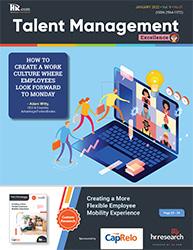











Like to submit an article? Use our online submission form or for more information go to www.hr.com/ExcellencePublications Publications 13 targeted Publications to reach your audience Informing, Educating, Enlightening and Assisting HR professionals in their personal and professional development, the Excellence series offers high-quality content through the publications!


















 Julie Winkle giulioni Author, Virtual /Live Keynote Presenter, Inc.’s Top 100 Leadership Speakers
Julie Winkle giulioni Author, Virtual /Live Keynote Presenter, Inc.’s Top 100 Leadership Speakers






 dr. Beverly Kaye CEO, BevKaye&Co.
dr. Beverly Kaye CEO, BevKaye&Co.




















 Technology
Technology




































